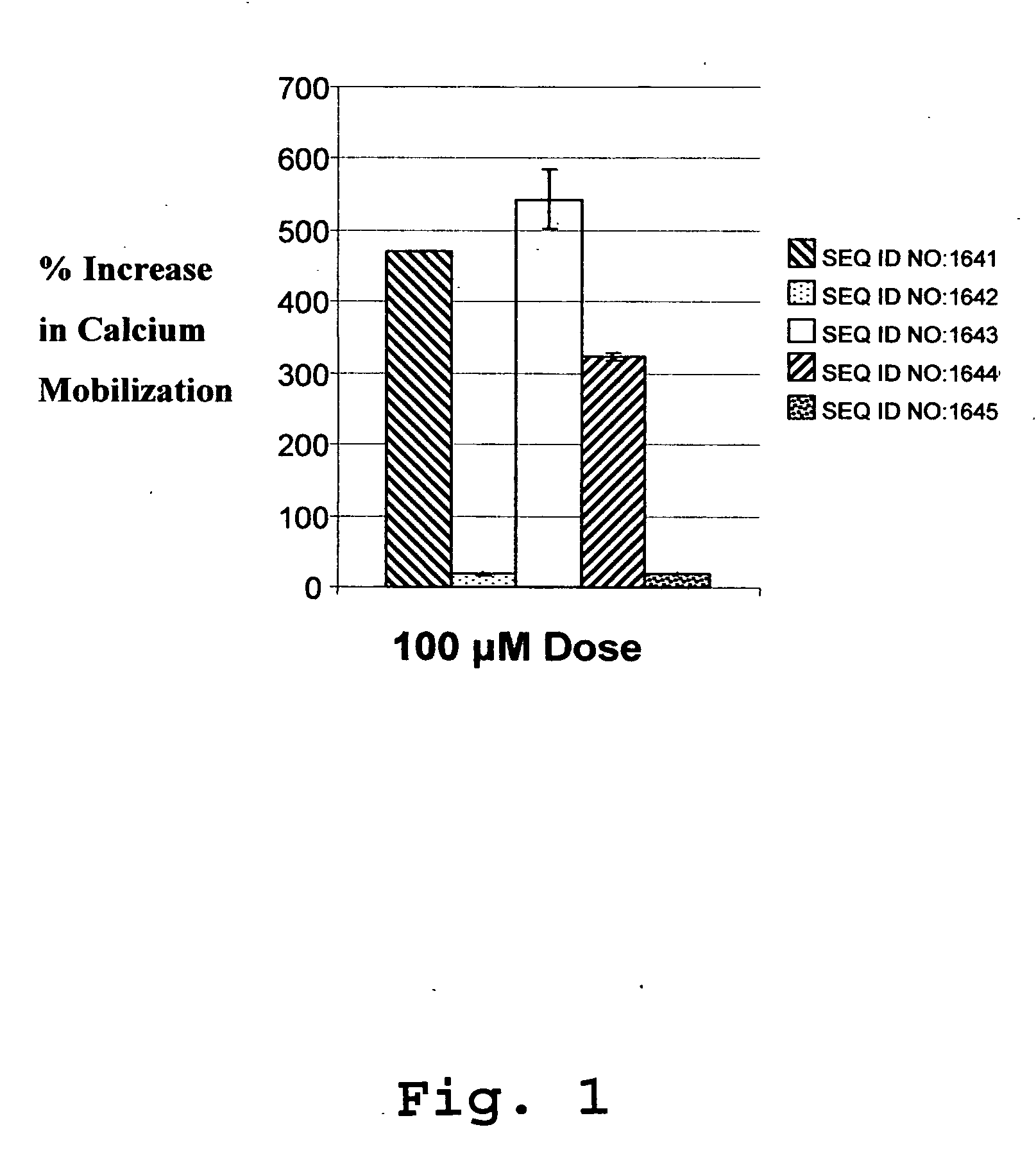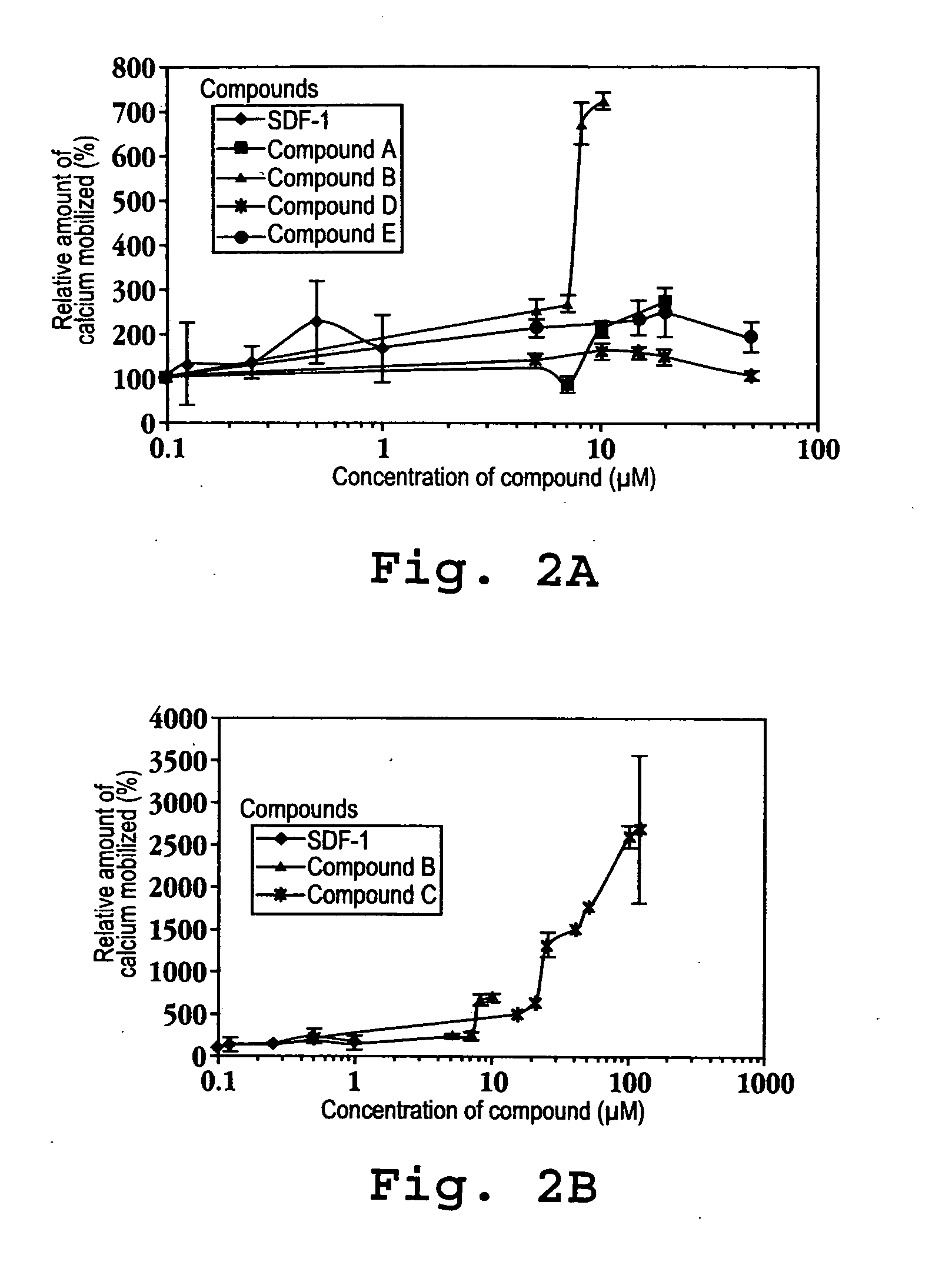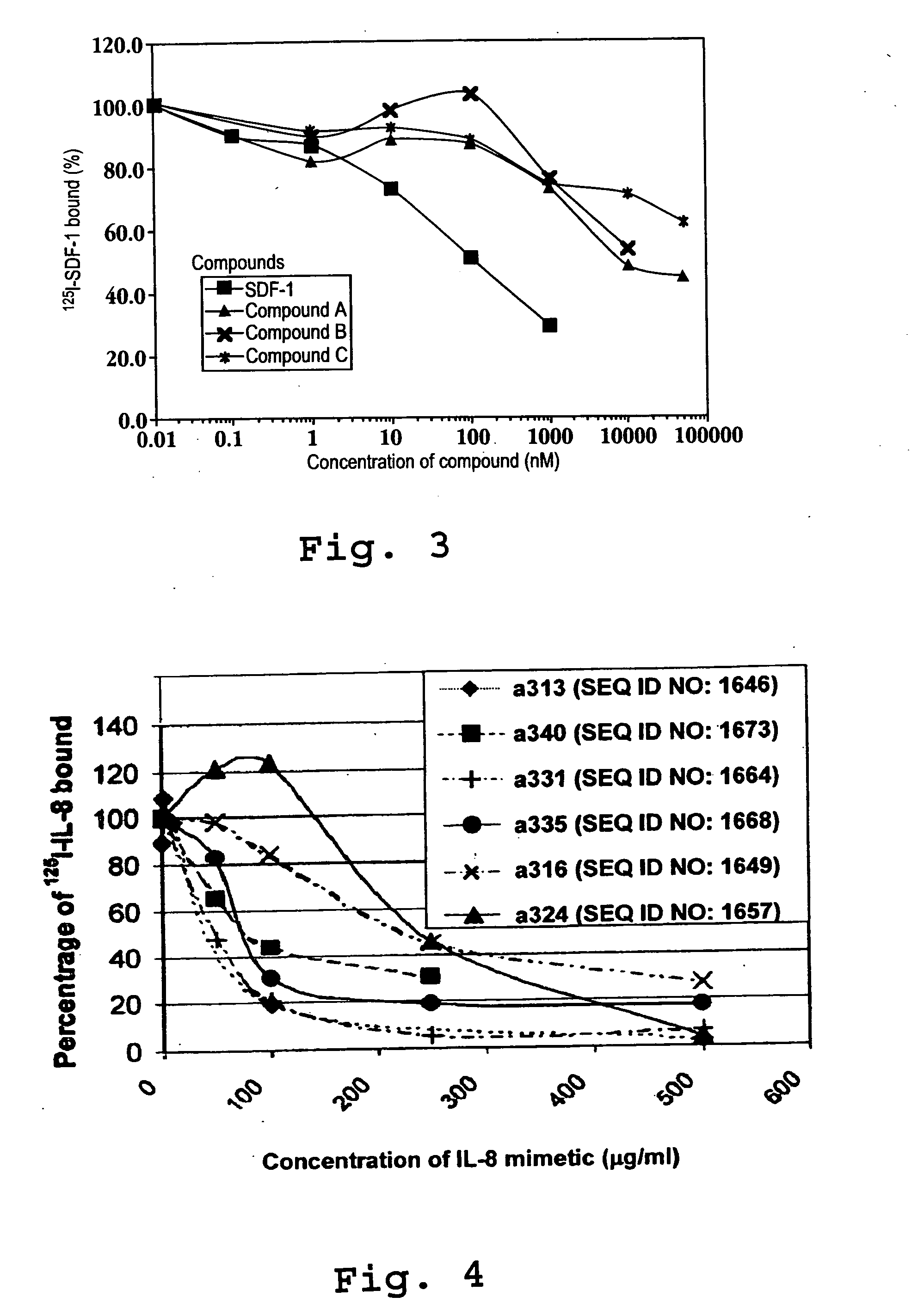Design of CXC chemokine analogs for the treatment of human diseases
a technology of cxc chemokine and analogs, which is applied in the field of design, derivation, and use of peptide agonists and antagonists of cxc chemokines, can solve the problems of adverse effects on the inflammatory process, lack of complete predictability of the scope of the chemokine's activity, etc., and achieve the effect of decreasing increasing the activity of the cell
- Summary
- Abstract
- Description
- Claims
- Application Information
AI Technical Summary
Benefits of technology
Problems solved by technology
Method used
Image
Examples
example 1
[0664] Peptides of the invention may be synthesized chemically from the C-terminus to the N-terminus (“reverse sequence”) using the Fmoc / tBu strategy either manually or automatically using a batchwise or continuous flow peptide synthesizer.
[0665] Reagents and Procedures
[0666] Main Solvent: a grade certified, ACS spectroanalyzed, N,N-dimethylformamide (DMF) (Fisher, D131-4). The DMF is treated with activated molecular sieves, type 4A (BDH, B54005) for at least two weeks and then tested with 2,4-dinitrofluorobenzene (FDNB) (Eastman). Equal volumes of an FDNB solution (1 mg / ml of FDNB in 95% EtOH) and DMF are mixed and allowed to stand for 30 minutes. The absorbance of the mixture is then taken at 381 nm over an FDNB blank solution (no DMF), and if the absorbance is approximately 0.2, then the DMF is suitable for the synthesis.
[0667] Deblocking Agent: 20% piperidine (Aldrich, 10,409-4) in DMF containing 0.5% (v / v) triton X100 (Sigma, T-9284).
[0668] Activating Agents: 2-(H-benzotria...
example 2
[0691] Modification with an Agent
[0692] Agents can be attached as modifying groups that are pendant or in-chain with a CXC chemokine mimetic. A trifunctional amino acid, for example, can be incorporated into the CXC chemokine mimetic as a linker and the third functionality can be connected to an agent. Protecting groups can be used to selectively attach an agent to the trifunctional amino acid. Benzyl esters are one type of protecting group that can be used for a lysine carboxyl, for example, and t-butoxycarbonyl can be used for amino groups such as, for example, the amino group in glutamic acid.
[0693] Amino, hydroxyl and carboxyl groups can be used, for example, as a connecting site for agents. Carboxyl groups can be used as a connecting site for agents having, for example, amino, hydroxyl, or thiol groups. Coupling agents include, but are not limited to, 1-ethyl-3(3-dimethylaminopropyl)carbodiimide (EDC) and 1,3-dicyclohexylcarbodiimide (DCC).
[0694] An example of an amine funct...
example 3
[0703] IP-10s
[0704] The IP-10 CXC chemokines are the subject of U.S. application Ser. No. 11 / 590,210, which is hereby incorporated herein by reference in its entirety. The cross-reference SEQ ID NOs from the source application are used in the explanation and in any associated table or figure, and the SEQ ID NOs used in the present application are provided to allow for location of the sequences in the formal sequence listing of the instant application
[0705] SEQ ID NOs: 1641-1645 were prepared for testing their ability to bind to an IP-10 receptor and their efficacy in mediating intracellular calcium mobilization ([Ca2+]i) at a variety of concentrations.
[0706] Binding and Calcium Mobilization: Suspensions of CXCR-3 / 300-19 cells were used to assess binding and intracellular calcium mobilization induced by IP-10 analogs. These are mouse pre-B lymphocytes transfected with the CXCR3 receptor, (Moser, et al). The cells were washed in RPMI media and resuspended in RPMI media supplemented...
PUM
| Property | Measurement | Unit |
|---|---|---|
| Fraction | aaaaa | aaaaa |
| Molar density | aaaaa | aaaaa |
| Molar density | aaaaa | aaaaa |
Abstract
Description
Claims
Application Information
 Login to View More
Login to View More - R&D
- Intellectual Property
- Life Sciences
- Materials
- Tech Scout
- Unparalleled Data Quality
- Higher Quality Content
- 60% Fewer Hallucinations
Browse by: Latest US Patents, China's latest patents, Technical Efficacy Thesaurus, Application Domain, Technology Topic, Popular Technical Reports.
© 2025 PatSnap. All rights reserved.Legal|Privacy policy|Modern Slavery Act Transparency Statement|Sitemap|About US| Contact US: help@patsnap.com



